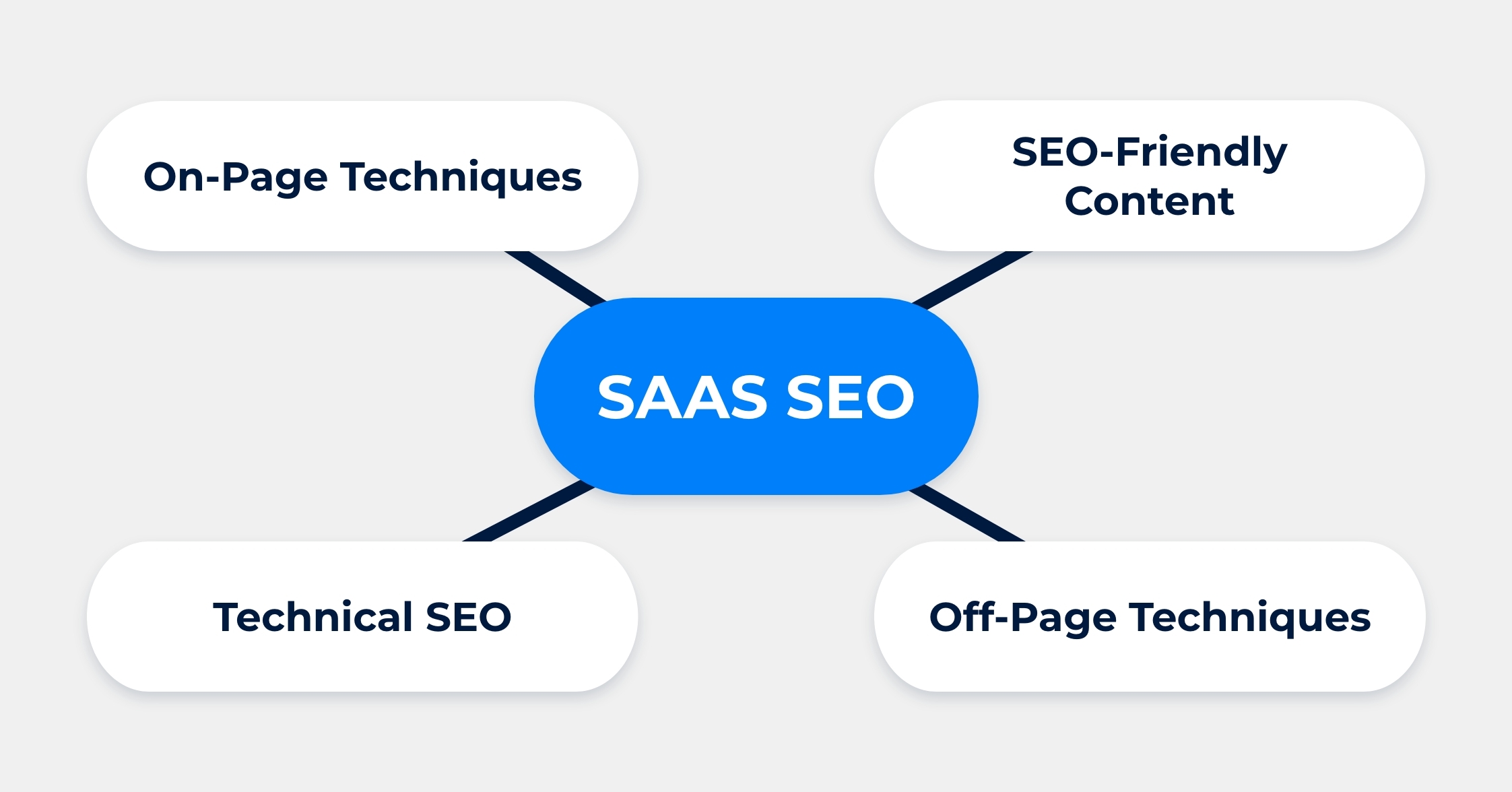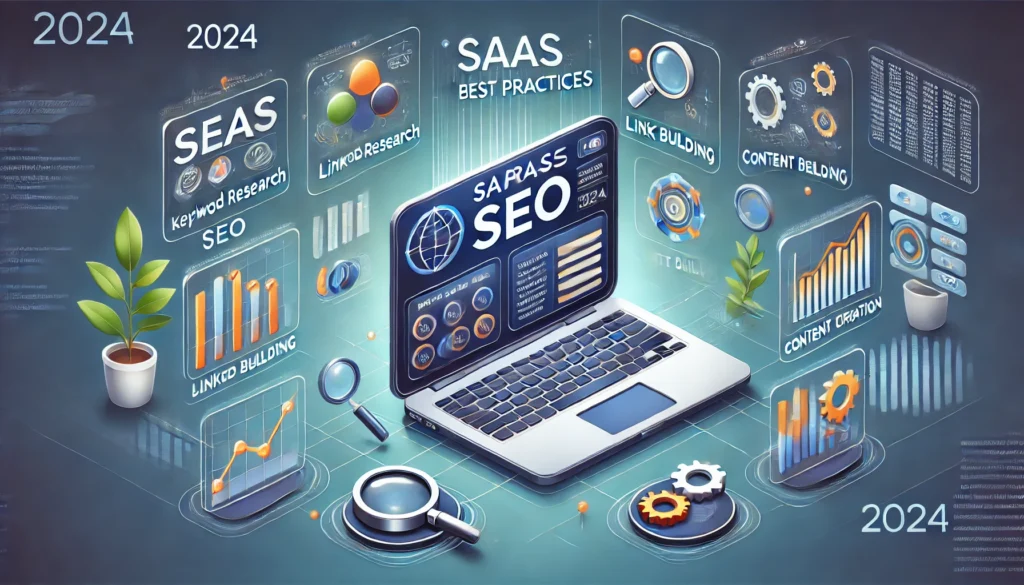SaaS SEO involves optimizing Software as a Service websites for search engines to increase visibility and attract potential customers. It focuses on keyword research, on-page, and off-page optimization.
SaaS SEO is essential for driving organic traffic to your software platform. By targeting specific keywords, you attract users actively searching for solutions your software offers. Content creation, technical SEO, and backlink strategies play crucial roles. High-quality content addresses customer pain points and showcases your expertise.
Technical SEO ensures fast, user-friendly website performance. Backlinks from reputable sites enhance your domain authority. A well-rounded SaaS SEO strategy boosts search engine rankings, leading to increased visibility and higher conversion rates. Effective SEO can be a game-changer, providing a competitive edge in the crowded SaaS market.
What Is SaaS SEO?
Software as a Service (SaaS) companies rely on online visibility to reach potential customers. This is where SaaS SEO comes into play. SaaS SEO is a unique set of strategies aimed at improving the online presence of SaaS companies. It helps these companies rank higher on search engines, thereby attracting more users.
Definition Of SaaS SEO
SaaS SEO involves optimizing a SaaS website to rank higher in search engine results. This requires a deep understanding of both SEO techniques and the SaaS industry. Unlike traditional SEO, SaaS SEO focuses on specific strategies tailored to SaaS products.
Some key elements of SaaS SEO include:
- Keyword Research: Identifying the right keywords that potential customers use to find SaaS products.
- Content Marketing: Creating valuable content that addresses users’ needs and showcases the SaaS product’s features.
- On-Page SEO: Optimizing individual pages to rank for specific keywords.
- Technical SEO: Ensuring the website is fast, secure, and easy to navigate.
- Link Building: Acquiring high-quality backlinks to improve domain authority.
Below is a table summarizing these elements:
| Element | Description |
|---|---|
| Keyword Research | Finding the right keywords to target |
| Content Marketing | Creating valuable content for users |
| On-Page SEO | Optimizing individual pages |
| Technical SEO | Improving website performance |
| Link Building | Getting high-quality backlinks |
Importance Of SaaS SEO
SaaS SEO is vital for several reasons. First, it helps SaaS companies reach their target audience. Search engines are often the first place users go to find software solutions. Ranking high on search results increases visibility and attracts potential customers.
Second, SaaS SEO builds credibility and trust. Websites that rank high are often seen as more reliable. This can lead to higher conversion rates and customer retention. A well-optimized site also provides a better user experience, which is crucial for SaaS products.
Third, SaaS SEO offers a cost-effective marketing strategy. Unlike paid ads, which require continuous investment, SEO efforts can provide long-term benefits. Once a site is optimized, it can continue to attract traffic without ongoing costs.
Here are some benefits of SaaS SEO:
- Increased Visibility: Higher rankings lead to more traffic.
- Better User Experience: Optimized sites are easier to navigate.
- Cost-Effective: Provides long-term benefits without ongoing costs.
- Higher Conversion Rates: Builds trust and credibility.
In summary, SaaS SEO is essential for the growth and success of SaaS companies. It helps them reach their target audience, build trust, and provide a better user experience.
Key Elements Of SaaS SEO
SaaS SEO is crucial for Software as a Service (SaaS) companies looking to enhance their online visibility. It involves various strategies to ensure your software solution ranks high in search engines. Here, we’ll dive into the key elements of SaaS SEO that can help you achieve your goals.
Keyword Research
Keyword research is the backbone of any successful SEO strategy. It involves identifying the terms and phrases your target audience uses to find services like yours. Using tools like Google Keyword Planner or Ahrefs can aid in this process.
Consider the following steps to conduct effective keyword research:
- Identify your target audience: Understand who your customers are and what they are searching for.
- Use keyword tools: Tools like SEMrush and Moz can provide valuable insights.
- Analyze competitors: Look at the keywords your competitors are ranking for.
- Focus on long-tail keywords: These are more specific and less competitive.
Here’s a simple table to illustrate keyword difficulty and search volume:
| Software Marketing | Difficulty | Search Volume |
|---|---|---|
| SaaS SEO | High | 5000 |
| Software marketing | Medium | 2000 |
| SEO tools for SaaS | Low | 1000 |
On-page Optimization
On-page optimization focuses on improving various elements within your website to enhance search engine rankings. This includes optimizing your content, HTML tags, and images.
Key areas to optimize include:
- Title Tags: Ensure each page has a unique and relevant title tag.
- Meta Descriptions: Write compelling meta descriptions to improve click-through rates.
- Header Tags: Use H1, H2, and H3 tags to structure your content.
- Image Alt Text: Describe images with relevant keywords.
Top SaaS SEO Technique
Link Building
Link building involves acquiring backlinks from other reputable websites. These links act as votes of confidence and can significantly impact your search engine rankings.
Effective link-building strategies include:
- Guest Blogging: Write articles for other blogs in your industry.
- Broken Link Building: Find broken links on other sites and suggest your content as a replacement.
- Resource Pages: Get your content listed on resource pages relevant to your niche.
- Social Media Sharing: Promote your content on social media to attract links.
Here’s a quick overview of some link-building techniques:
| Technique | Difficulty | Effectiveness |
|---|---|---|
| Guest Blogging | Medium | High |
| Broken Link Building | High | Medium |
| Resource Pages | Low | Medium |
Content Marketing
Content marketing is essential for SaaS SEO. It involves creating valuable content that attracts and engages your target audience. High-quality content can drive organic traffic and generate leads.
Effective content marketing strategies include:
- Blogging: Regularly publish blog posts on topics relevant to your audience.
- Case Studies: Showcase success stories to build credibility.
- Whitepapers: Offer in-depth guides and reports.
- Webinars: Host live sessions to educate and engage your audience.
Consider the following content types for your SaaS business:
| Content Type | Purpose |
|---|---|
| Blog Posts | Attract organic traffic |
| Case Studies | Showcase success stories |
| Whitepapers | Offer in-depth insights |
| Webinars | Engage and educate |
Remember, the key to successful content marketing is consistency and relevance. Always focus on providing value to your audience.
Benefits Of SaaS SEO
SaaS SEO is the process of optimizing software-as-a-service (SaaS) websites for search engines to increase visibility and attract more users. The benefits of SaaS SEO are numerous and can significantly impact the success of a SaaS business. These benefits include increased organic traffic, improved search engine rankings, and higher conversion rates.
Increased Organic Traffic
One of the primary benefits of SaaS SEO is increased organic traffic. Organic traffic refers to visitors who find your website through search engines without paid ads. This type of traffic is highly valuable as it consists of users actively searching for solutions your SaaS product offers.
By implementing effective SEO strategies, such as:
- Keyword Research: Identifying and targeting relevant keywords that potential customers are searching for.
- Content Optimization: Creating high-quality, informative content that addresses user needs and includes targeted keywords.
- Technical SEO: Ensuring your website is technically sound, with fast loading times, mobile-friendliness, and proper indexing.
Your website can rank higher on search engine results pages (SERPs). This leads to more clicks and, ultimately, more organic traffic.
Here is a simple table showcasing the impact of SEO on organic traffic:
| SEO Strategy | Impact on Organic Traffic |
|---|---|
| Keyword Research | Higher visibility for relevant searches |
| Content Optimization | Increased user engagement and click-through rates |
| Technical SEO | Improved website performance and user experience |
Overall, increased organic traffic can lead to more leads and potential customers for your SaaS business.
Improved Search Engine Rankings
Another significant benefit of SaaS SEO is improved search engine rankings. Higher rankings on SERPs mean your website appears closer to the top of search results. This visibility is crucial as users are more likely to click on the top results.
To achieve better rankings, focus on:
- On-Page SEO: Optimize title tags, meta descriptions, headers, and images with relevant keywords.
- Off-Page SEO: Build high-quality backlinks from reputable websites to increase domain authority.
- User Experience: Improve site navigation, mobile usability, and overall user experience.
These efforts help search engines understand your website’s relevance and authority in your industry.
Here’s a breakdown of how these factors contribute to improved rankings:
| SEO Factor | Contribution to Rankings |
|---|---|
| On-Page SEO | Helps search engines identify the content and its relevance |
| Off-Page SEO | Enhances website authority and trustworthiness |
| User Experience | Ensures users stay longer and engage more with the site |
Improved search engine rankings can lead to increased visibility, more clicks, and higher chances of converting visitors into customers.
Higher Conversion Rates
SaaS SEO also contributes to higher conversion rates. Conversion rate is the percentage of visitors who take a desired action, such as signing up for a trial or purchasing a subscription.
Effective SEO strategies can enhance conversion rates by:
- Targeting Intent-Based Keywords: Focus on keywords with high purchase intent to attract users ready to convert.
- Creating Compelling Content: Develop content that addresses pain points and provides solutions, encouraging users to take action.
- Optimizing Landing Pages: Ensure landing pages are user-friendly, with clear calls-to-action and easy navigation.
Here’s a table illustrating how different SEO strategies can impact conversion rates:
| SEO Strategy | Impact on Conversion Rates |
|---|---|
| Intent-Based Keywords | Attracts users with high purchase intent |
| Compelling Content | Engages users and builds trust |
| Optimized Landing Pages | Simplifies the conversion process |
By implementing these strategies, your SaaS website can convert more visitors into paying customers, driving business growth and success.
Best Practices For Saas Seo
Improving SaaS SEO can lead to significant growth for your software-as-a-service business. It’s essential to follow the best practices to ensure your website ranks high on search engines. This guide will cover the best practices for SaaS SEO to help you achieve better visibility and increased traffic.
Targeting The Right Keywords
Targeting the right keywords is crucial for SaaS SEO. Keywords help search engines understand what your content is about. Start by conducting thorough keyword research. Use tools like Ahrefs, SEMrush, or Google Keyword Planner.
Consider these steps:
- Identify long-tail keywords related to your SaaS product.
- Analyze competitor keywords to find gaps and opportunities.
- Focus on keywords with high search volume but low competition.
Create a table to organize your keywords:
| Keyword | Search Volume | Competition |
|---|---|---|
| Project management software | 5,000 | Low |
| CRM tool for small business | 3,200 | Medium |
| Time tracking app | 4,500 | High |
Optimizing Landing Pages
Optimizing landing pages is essential for converting visitors into customers. Ensure your landing pages are user-friendly and provide valuable information.
Follow these best practices:
- Use clear and concise headings that include your primary keywords.
- Include a strong call-to-action (CTA) that stands out.
- Optimize images and videos to improve page load speed.
- Ensure mobile responsiveness for a better user experience.
Here’s a checklist for optimizing landing pages:
| Optimization Task | Status |
|---|---|
| Primary keyword in the title | Done |
| Strong CTA | Done |
| Optimized images | Pending |
| Mobile responsiveness | Done |
Creating High-quality Content
Creating high-quality content is vital for engaging your audience and improving SEO. Content that provides value keeps visitors on your site longer and encourages sharing.
Consider these tips:
- Write informative blog posts that address your audience’s pain points.
- Use visuals like infographics and videos to make content more engaging.
- Update old content regularly to keep it relevant.
Here’s a content creation process:
- Identify topics based on keyword research.
- Create an outline to organize your thoughts.
- Write the content, focusing on readability and value.
- Add images, videos, and other media.
- Proofread and publish.
Building A Strong Backlink Profile
Building a strong backlink profile helps improve your site’s authority and search engine ranking. Backlinks from reputable sites signal to search engines that your content is trustworthy.
Follow these strategies:
- Guest post on high-authority blogs related to your industry.
- Reach out to influencers for collaborations.
- Create shareable content that others will link to naturally.
Here’s a backlink-building plan:
| Task | Description | Status |
|---|---|---|
| Guest posting | Submit articles to industry blogs | Ongoing |
| Influencer outreach | Contact influencers for links | Pending |
| Shareable content | Create infographics and resources | Completed |
Challenges In SaaS SEO
SaaS SEO presents a unique set of challenges. SaaS businesses must navigate a dynamic and highly competitive market. Search engine algorithms constantly change, and measuring ROI can be difficult. Understanding these challenges is crucial for success.
Highly Competitive Market
The SaaS industry is highly competitive. Many companies offer similar services, making it hard to stand out. Effective SEO strategies are essential.
Key challenges include:
- High competition for keywords: Popular keywords often have many competitors.
- Brand authority: Established brands dominate search results.
- Content saturation: Many SaaS companies produce similar content.
To overcome these challenges:
- Target long-tail keywords: These are less competitive and more specific.
- Build high-quality backlinks: Backlinks from reputable sites improve rankings.
- Create unique content: Offer valuable insights to differentiate your brand.
| Challenge | Solution |
|---|---|
| High competition for keywords | Target long-tail keywords |
| Brand authority | Build high-quality backlinks |
| Content saturation | Create unique content |
Constant Algorithm Updates
Search engine algorithms change frequently. These updates can impact your SEO efforts.
Common issues include:
- Algorithm changes: Updates can alter your site’s ranking.
- Penalty risks: Non-compliance with new rules can result in penalties.
- Adaptation difficulties: Keeping up with changes requires time and resources.
Strategies to handle updates:
- Monitor algorithm updates: Stay informed about changes.
- Follow best practices: Ensure your site complies with current guidelines.
- Invest in SEO tools: Tools help track changes and adjust strategies.
| Issue | Strategy |
|---|---|
| Algorithm changes | Monitor updates |
| Penalty risks | Follow best practices |
| Adaptation difficulties | Invest in SEO tools |
Measuring ROI
Measuring the ROI of SEO efforts in SaaS can be complex. Many factors influence the outcome.
Challenges include:
- Long sales cycles: Sales cycles in SaaS are often long, making it hard to attribute success to SEO.
- Multiple touchpoints: Customers often interact with multiple channels before converting.
- Indirect benefits: SEO efforts can lead to brand awareness and credibility, which are harder to measure.
To effectively measure ROI:
- Track key metrics: Focus on metrics like organic traffic, conversion rates, and customer lifetime value.
- Use attribution models: These models help identify which touchpoints contribute to conversions.
- Analyze long-term impact: Consider the long-term benefits of increased visibility and brand authority.
| Challenge | Solution |
|---|---|
| Long sales cycles | Track key metrics |
| Multiple touchpoints | Use attribution models |
| Indirect benefits | Analyze long-term impact |

Credit: helium-seo.com
Tools And Resources For Saas Seo
SaaS SEO is vital for driving organic traffic to your software-as-a-service platform. Utilizing the right tools and resources can significantly impact your SEO efforts. These tools help streamline your processes and ensure your content ranks higher on search engines.
Keyword Research Tools
Finding the right keywords is crucial for any SEO strategy. Keyword research tools help you identify the most relevant keywords for your SaaS business. Here are some top tools:
- Google Keyword Planner: This free tool provides insights into keyword search volumes and competition levels.
- Ahrefs: Known for its extensive keyword database, Ahrefs offers keyword difficulty scores and related keyword suggestions.
- SEMrush: SEMrush provides keyword analytics, including trends, difficulty, and competitive analysis.
- Ubersuggest: This tool offers keyword suggestions, search volume data, and SEO difficulty scores.
Using these tools, you can pinpoint high-traffic keywords and optimize your content accordingly. For instance, if you are targeting the keyword “SaaS project management,” these tools can help you identify related terms and phrases to include in your content.
| Tool | Key Features | Price |
|---|---|---|
| Google Keyword Planner | Search volumes, competition levels | Free |
| Ahrefs | Keyword difficulty, related suggestions | Paid |
| SEMrush | Trends, competitive analysis | Paid |
| Ubersuggest | Suggestions, search volumes | Free/Paid |
SEO Analytics Platforms
Monitoring your SEO performance is essential for making informed decisions. SEO analytics platforms provide comprehensive data on your website’s performance. Here are some popular options:
- Google Analytics: This free tool offers detailed insights into website traffic, user behavior, and conversion rates.
- Google Search Console: It helps monitor your website’s presence in Google search results, providing data on clicks, impressions, and keywords.
- Ahrefs: Besides keyword research, Ahrefs offers site audits, backlink analysis, and rank tracking.
- SEMrush: This platform provides in-depth SEO audits, keyword tracking, and competitive analysis.
Using these platforms, you can track your website’s performance and identify areas for improvement. For example, Google Analytics can show you which pages receive the most traffic and which keywords drive that traffic.
Consider setting up custom dashboards to monitor key metrics, such as organic traffic, bounce rates, and conversion rates. This data will help you refine your SEO strategy and achieve better results.
Link Building Tools
Building high-quality backlinks is a critical component of any SEO strategy. Link building tools help you identify and acquire these valuable links. Here are some top tools:
- Ahrefs: This tool offers extensive backlink analysis, helping you find potential link-building opportunities.
- SEMrush: SEMrush provides a backlink audit tool, allowing you to identify toxic links and uncover new link-building prospects.
- BuzzSumo: BuzzSumo helps you find popular content in your niche, making it easier to identify potential link-building targets.
- Moz Link Explorer: This tool provides detailed backlink data, including domain authority and link metrics.
Using these tools, you can develop a robust link-building strategy. For example, Ahrefs can help you find websites that link to your competitors but not to you. You can then reach out to these sites and request backlinks.
Focus on acquiring high-quality backlinks from reputable sources. This will boost your website’s authority and improve your search engine rankings.
Future Trends In SaaS SEO
In the rapidly evolving world of SaaS SEO, staying ahead of the curve is crucial. The landscape is continuously changing, driven by technological advancements and shifting user behaviors. Companies must adopt new strategies to maintain their competitive edge. Let’s explore the future trends in SaaS SEO that are set to revolutionize the industry.
Voice Search Optimization
Voice search is growing at a phenomenal rate. More people use voice-activated devices like Google Home, Amazon Echo, and Siri. Optimizing for voice search can significantly boost your SaaS visibility. Here are some key strategies:
- Focus on Conversational Keywords: Voice searches are more conversational. Use long-tail keywords that match natural speech patterns.
- Create FAQ Pages: These pages answer common questions directly. They align perfectly with voice search queries.
- Optimize for Local SEO: Many voice searches are location-based. Ensure your business information is accurate and up-to-date in local directories.
Consider this table for voice search optimization tips:
| Strategy | Description |
|---|---|
| Use Natural Language | Incorporate phrases people use in everyday conversation. |
| Answer Questions | Create content that answers common questions about your SaaS product. |
| Local SEO | Optimize your content for local searches to attract nearby users. |
Mobile-first Indexing
Google now uses mobile-first indexing. This means Google predominantly uses the mobile version of the content for indexing and ranking. It’s essential to ensure your SaaS site is mobile-friendly. Here are some tips:
- Responsive Design: Ensure your website adapts to various screen sizes seamlessly.
- Fast Load Times: Mobile users expect quick load times. Optimize images and use efficient coding practices.
- Mobile-Friendly Content: Ensure your content is easy to read on mobile devices. Use larger fonts and concise paragraphs.
Below is a quick checklist for mobile-first indexing:
| Aspect | Action |
|---|---|
| Responsive Design | Implement a responsive design that works on all devices. |
| Image Optimization | Compress images for faster loading times on mobile. |
| Font Size | Use larger fonts for better readability on small screens. |
Artificial Intelligence In SEO
Artificial Intelligence (AI) is transforming the SEO landscape. AI-driven tools and algorithms can optimize and enhance your SaaS SEO strategies. Here are some impactful uses of AI in SEO:
- Content Creation: AI can help generate content ideas and even write articles. Tools like GPT-4 are leading the way.
- SEO Analysis: AI tools can analyze your website and provide actionable insights. They help identify areas for improvement.
- Predictive Analysis: AI can predict trends and user behaviors. This allows you to stay ahead in your SEO strategies.
Here’s a table showcasing AI applications in SEO:
| Application | Benefit |
|---|---|
| Content Generation | AI tools help create relevant and engaging content. |
| SEO Audits | AI tools can perform comprehensive audits for better optimization. |
| User Behavior Prediction | AI helps predict user trends to tailor your strategies. |
Frequently Asked Questions
What Does Saas Mean Seo?
SaaS stands for Software as a Service. It is a cloud-based service where users access software online. This model eliminates the need for physical installation and maintenance. SaaS is popular for its scalability and cost-effectiveness.
What Is The Difference Between SaaS SEO And Traditional Seo?
SaaS SEO focuses on optimizing software-as-a-service websites. Traditional SEO targets general websites. SaaS SEO often includes technical aspects, user experience, and content marketing tailored to software users.
How To Do Seo For SaaS Business?
Optimize your SaaS website with relevant keywords. Create high-quality, informative content. Build strong backlinks. Improve site speed and user experience. Utilize social media for engagement and promotion.
Conclusion
Mastering SaaS SEO can transform your business. Focus on quality content, relevant keywords, and user experience. Stay updated with trends and algorithms. Implement these strategies to boost visibility, attract more traffic, and drive growth. Consistent effort will yield long-term success in the competitive SaaS market.





